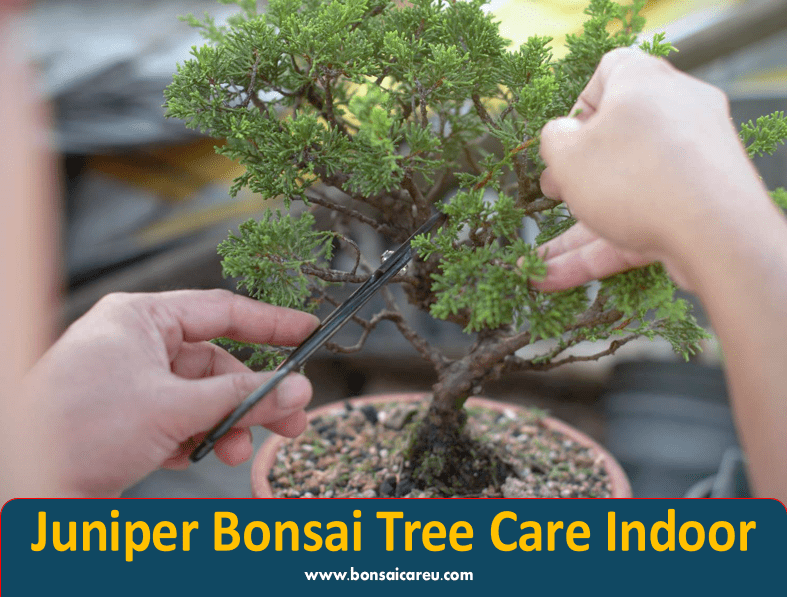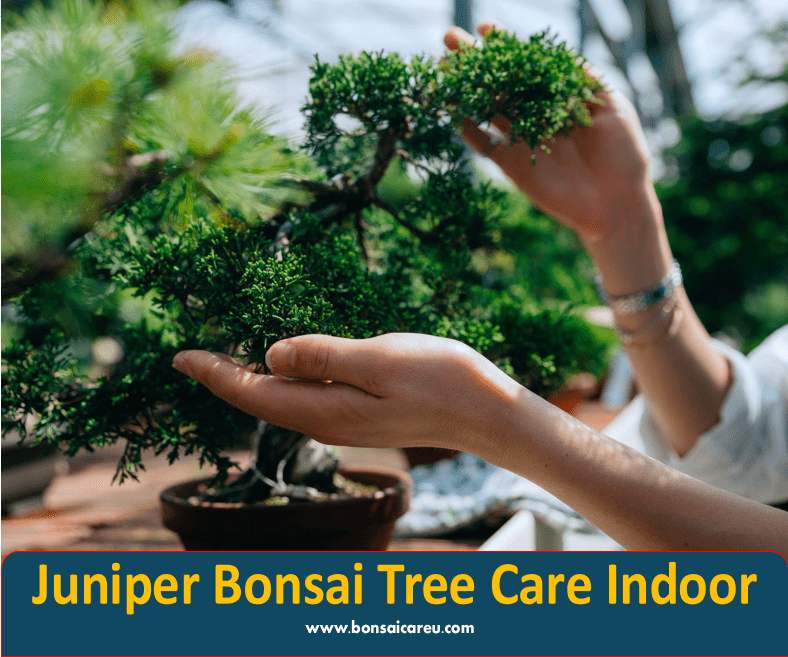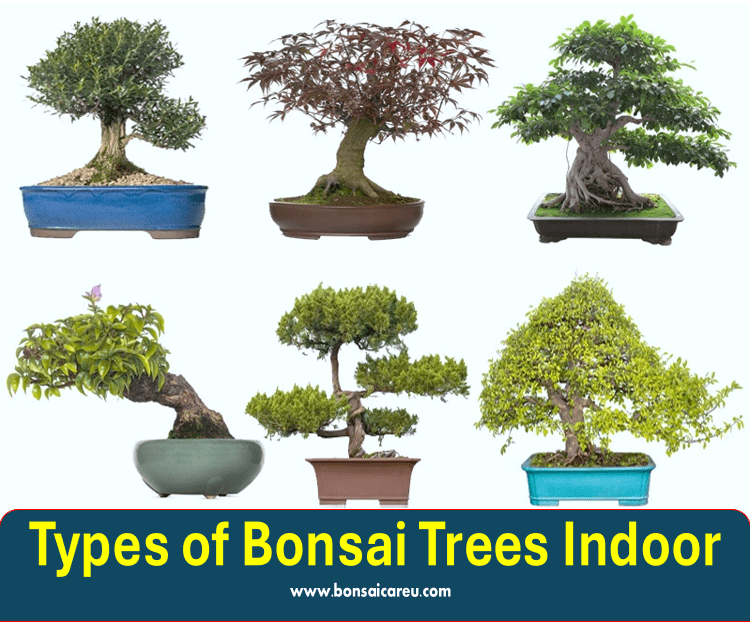Juniper Bonsai Tree Care Indoor: To care for an indoor juniper bonsai tree, place it in a bright location and water only when the topsoil feels dry. Avoid overwatering and ensure good drainage.
Proper care is essential for the health and longevity of your bonsai tree. Juniper bonsai trees are beautiful and elegant living art pieces that require specific care to thrive indoors. With the right conditions and attention to detail, you can enjoy the beauty of these miniature trees in your home or office.
We will explore the essential aspects of caring for an indoor juniper bonsai tree, including light requirements, watering needs, temperature considerations, and ongoing maintenance. By following these guidelines, you can ensure the health and vitality of your juniper bonsai and appreciate its natural beauty for years to come.

Choosing A Juniper Bonsai Tree
When selecting the perfect juniper bonsai tree for your indoor space, consider a few things. First, you’ll want to look at the different species available. Next, finding a healthy tree that will thrive in your home is important. Let’s investigate these considerations to ensure you choose the right juniper bonsai tree.
Consider The Species
Juniper bonsai trees come in various species, each with its unique characteristics. Consider the following options:
- Juniperus procumbens – Also known as the “Procumbens Nana,” this species has a low-growing habit and is one of the most popular choices for bonsai enthusiasts.
- Juniperus squamata—With its striking blue-green foliage, Juniperus squamata is an excellent choice for adding a touch of elegance to your indoor space.
- Juniperus chinensis—This species offers a wide range of cultivars, providing plenty of options. Whether you prefer a compact or cascading bonsai, Juniperus chinensis has a variety to suit your taste.
Look For A Healthy Tree
When selecting a juniper bonsai tree, it’s crucial to find a healthy specimen that will thrive in your indoor environment. With that in mind, here are some aspects to assess:
- Growth: Look for a tree with balanced and even growth, without wilting or yellowing leaves.
- Trunk: The trunk should be sturdy and well-formed, indicating a well-established tree.
- Foliage: Check for healthy foliage, free from pests or diseases. The color should be vibrant and consistent.
- Roots: A healthy bonsai tree will have well-developed, fibrous roots that fill the container without being overly crowded.
Providing The Right Environment
Providing the right environment is essential for the health and vitality of your indoor juniper bonsai tree. Understanding the specific needs of this delicate plant will ensure its long-term growth and beauty. Creating an optimal environment involves considerations such as indoor versus outdoor care, temperature and humidity, and light and sunlight. Let’s explore these factors in more detail.
Indoor Vs. Outdoor
The juniper bonsai tree can thrive indoors and outdoors, but indoor care requires special attention to replicate its natural habitat. While outdoor juniper bonsai trees benefit from exposure to natural elements, indoor trees depend on meticulous care to maintain their health.
Temperature And Humidity
Juniper bonsai trees prefer cooler temperatures and higher humidity levels. Ideally, indoor temperatures should range between 60°F to 75°F, and humidity should be kept around 60% to 70% to mimic the mild climate they thrive in. Consider using a humidity tray or a room humidifier to maintain the ideal moisture levels.
Light And Sunlight
Juniper bonsai trees need ample sunlight for sustained growth. When placing your bonsai indoors, ensure it receives at least four to six hours of direct sunlight daily. Position the tree near a south-facing window to maximize sun exposure. Consider using grow lights or fluorescent bulbs to supplement the light requirements if natural sunlight is insufficient.
Watering And Moisture
Watering Frequency
Always check soil moisture before watering. Use your finger to test soil dampness.
Proper Watering Technique
- Water when the topsoil feels slightly dry to the touch.
- Ensure water penetrates the roots thoroughly.
Avoiding Overwatering
- Avoid pooling water at the base of the tree.
- Ensure the pot has adequate drainage holes.
- Do not water on a fixed schedule; adjust based on plant needs.

Pruning And Shaping
Pruning and shaping are crucial aspects of Juniper Bonsai tree care indoors. Regularly maintaining the shape and using proper pruning techniques ensure your bonsai remains healthy, vibrant, and visually appealing. In this section, we will discuss the importance of maintaining the shape, various pruning techniques, and the removal of dead or unwanted branches.
Maintaining The Shape
Maintaining the shape of your Juniper Bonsai tree is essential for its overall appearance. By regularly pruning and shaping the tree, you can control its growth pattern and create the desired form. One of the main objectives is to imitate the look of mature trees found in nature. This not only adds beauty to your indoor bonsai but also helps achieve a harmonious and balanced aesthetic.
When it comes to maintaining the shape, it is important to remember that Juniper Bonsai trees can take a considerable amount of pruning. However, you should avoid removing large portions of the foliage simultaneously, as it may stress the tree. Instead, gradually shaping over time allows the tree to recover and adjust to the changes.
Pruning Techniques
Pruning techniques play a vital role in shaping your Juniper Bonsai tree. There are various methods you can use to achieve the desired form:
- Pinching: This technique involves using your fingers or bonsai shears to pinch off the new growth. By removing the tips of the branches, you can encourage branching, create a fuller canopy, and maintain the tree’s shape.
- Thinning: Thinning is selectively removing certain branches or foliage to open the tree’s canopy. This helps improve air circulation and light penetration, which is essential for the bonsai’s overall health.
- Wiring: Wiring is a technique for bending and shaping branches in the desired direction. It involves wrapping copper or aluminum wire around the branches and gently bending them into the desired position. Though wiring can be effective, it is important to monitor the tree closely to prevent wire marks from damaging the bark. The wire should be removed once the branches have been set in the desired position.
Removing Dead Or Unwanted Branches
To maintain the health and aesthetic appeal of your Juniper Bonsai tree, removing dead or unwanted branches is essential. These branches not only detract from the overall beauty of the bonsai but can also create a potential breeding ground for pests and diseases. Use bonsai shears to carefully remove any dead or unhealthy branches, making clean cuts just above the branch collar. This encourages proper healing and prevents damage to the tree.
Regular pruning and shaping of your Juniper Bonsai tree indoors helps maintain its form and promotes healthy growth and vitality. Following these techniques ensures your bonsai remains a stunning centerpiece in your home or office.
Fertilizing And Nutrients
When caring for your indoor Juniper bonsai tree, ensuring proper fertilization and nutrients is crucial for its health and longevity. This section will delve into the key aspects of fertilizing and providing essential nutrients for your Juniper bonsai.
Choosing The Right Fertilizer
Selecting the appropriate fertilizer for your Juniper bonsai tree is essential. Look for a high-quality, balanced, liquid organic fertilizer designed for bonsai trees. Ensure that the N-P-K ratio on the fertilizer label is balanced, such as 7-7-7 or 10-10-10, to provide the necessary essential nutrients in proportions.
Fertilizing Schedule
Establishing a regular fertilizing schedule is important for maintaining the health of your Juniper bonsai. During the growing season, typically from spring to fall, fertilize your bonsai every two weeks. However, during the dormant season, reduce the frequency to once a month to accommodate the tree’s reduced nutrient needs.
Providing Essential Nutrients
In addition to regular fertilization, it’s crucial to provide essential nutrients to your Juniper bonsai. Organic matter such as compost, well-rotted manure, and vermicompost can enrich the soil and supply important nutrients. Additionally, a balanced micronutrient supplement can ensure your bonsai receives all the necessary elements for its growth and development.
Pests And Diseases
Caring for your indoor juniper bonsai tree involves more than just watering and pruning. It is important to know the potential pests and diseases that can affect these delicate plants. By understanding common pests and diseases and how to identify and treat them, you can ensure the health and longevity of your juniper bonsai tree.
Common Pests
Like any other plant, juniper bonsai trees are susceptible to pests. Here are some common pests you should watch out for:
- Aphids: These tiny insects can suck the sap out of your bonsai tree, causing damage to the leaves and twigs.
- Spider mites: These minuscule pests can create web-like coverings on your bonsai tree, causing leaves to turn yellow and fall off.
- Scales: These pests look like small, oval-shaped bumps on the branches and leaves of your bonsai tree. They can weaken and damage the tree if left untreated.
- Caterpillars: These voracious eaters can quickly defoliate your juniper bonsai tree if not promptly dealt with.
To control these pests, use natural insecticides or insecticidal soaps specifically designed for bonsai trees. Remember to follow the label instructions and apply treatments carefully to avoid harming your tree.
Identifying And Treating Diseases
Apart from pests, juniper bonsai trees can also be vulnerable to various diseases. Here are some common diseases you should be aware of and how to deal with them:
- Root Rot: One of the most common diseases in bonsai trees, root rot occurs when the roots become waterlogged, leading to fungal growth. To prevent root rot, ensure proper drainage and avoid over-watering your juniper bonsai.
- Needle Blight: This fungal disease causes the needles of your bonsai tree to turn brown or yellow and eventually fall off. To treat needle blight, prune infected branches and apply a fungicide specifically formulated for juniper bonsai trees.
- Mold and Mildew: Excessive moisture can lead to the growth of mold and mildew on your juniper bonsai tree. Improve air circulation and keep the foliage dry to prevent these fungal infections.
Regularly inspecting your bonsai tree for any signs of disease is essential for early detection and treatment. If needed, consult with a bonsai expert or horticulturist for guidance on specific diseases and treatments.

Frequently Asked Questions On Juniper Bonsai Tree Care Indoor
How Do You Care For A Juniper Bonsai Plant Indoors?
To care for a juniper bonsai plant indoors, place it near a sunny window, water when the soil is dry, and use well-draining soil. Prune regularly to maintain its shape. Keep the humidity levels high and avoid drafts.
How Often Do You Water Juniper Bonsai?
Water juniper bonsai when the top inch of soil feels dry. Use a watering can to avoid disturbing the soil. Adjust the frequency based on environmental factors. Aim to maintain moderate moisture levels for optimal growth.
Do Juniper Bonsai Trees Need Direct Sunlight?
Yes, Juniper bonsai trees require direct sunlight to thrive. They need around 6 hours of direct sunlight daily to ensure healthy growth and development. Place them in a well-lit area, like near a sunny window or in a sunny spot outdoors, to provide the necessary light.
How Do You Take Care Of A Bonsai Tree Indoors?
To care for a bonsai tree indoors, place it near a sunny window, water it when the soil is slightly dry, trim it regularly, and use well-draining soil. Keep humidity levels stable.
How Often Should I Water My Juniper Bonsai Tree Indoors?
Water your Juniper Bonsai tree when the topsoil feels dry to the touch.
What Is The Best Location For An Indoor Juniper Bonsai Tree?
Place your Juniper Bonsai tree near a bright window where it gets indirect sunlight.
Conclusion
Caring for an indoor juniper bonsai tree requires attention to watering, lighting, and pruning. Understanding these essential elements ensures the health and longevity of your bonsai. With the right care, your juniper bonsai tree can thrive and bring natural beauty into your home.
Explore and enjoy the rewarding world of bonsai!


